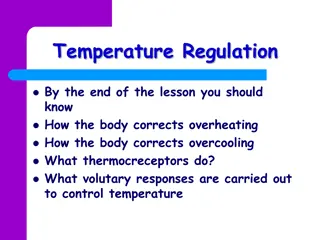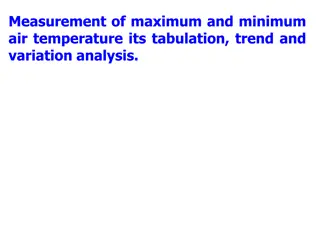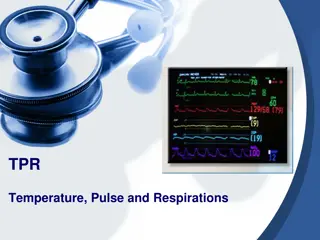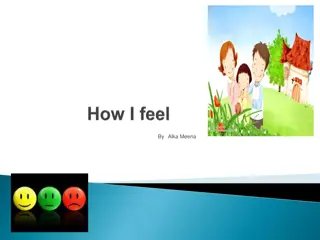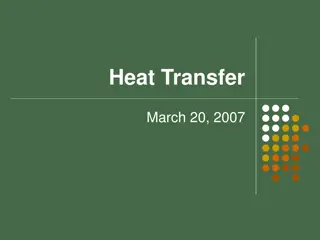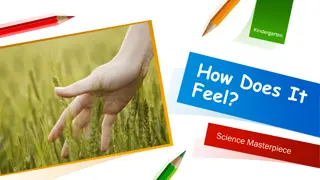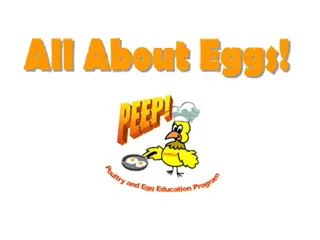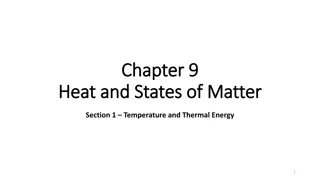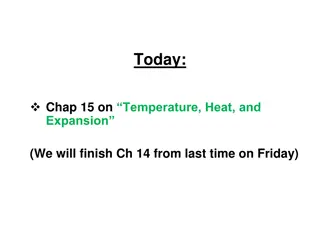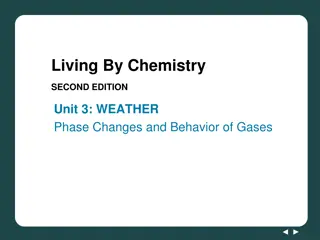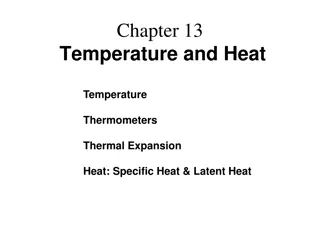Exploring Temperature: From Touch to Thermometer
Explore the concept of temperature in Year 4 lesson 1, understanding that touch is not always accurate in judging temperature. Engage in activities to test different temperatures and discover the limitations of using the sense of touch. Lesson 2 introduces using a thermometer to measure temperature accurately and predict water temperature based on room temperature.
Download Presentation

Please find below an Image/Link to download the presentation.
The content on the website is provided AS IS for your information and personal use only. It may not be sold, licensed, or shared on other websites without obtaining consent from the author. Download presentation by click this link. If you encounter any issues during the download, it is possible that the publisher has removed the file from their server.
E N D
Presentation Transcript
Keeping Warm Year 4 Lesson 1
L.O To know that touch is not an accurate way of judging temperature
Touch Touch is a method of telling whether things are hot or cold. Is it accurate? Why, Why not?
Experiment Questions You have; How can you judge the temperatures? How could it be tested? Why can t you tell how hot the water is by looking at it? A bowl of iced water Bowl of water at room temperature Bowl of warm water
Your activity Touch the items Draw and write ideas about how hot each is. What happens when you do this? Have one hand in the ice, one hand in the warm. Then put both hands in the bowl at room temperature. Do you notice anything different?
Is it always easy to tell by using the sense of touch? What about if there were slight differences?
Health and Safety Do not touch ice immediately after it is removed from the freezer. Water should be warm rather than hot.
How else can temperature be tested?
Keeping Warm Lesson 2
L.O To use a thermometer to make careful measurements of temperature using standard measures. To know that temperature is a measure of how hot and cold things are. To know that something will cool and warm until it is the same temperature as its surroundings.
Focus Use a thermometer correctly Predict the temperature of water, given the temperature of the room.
Can you think of. Three ways to make things hotter? Three ways to make things colder?
You need to be accurate at recording and taking the temperature of things. Hold the thermometer Read the scale at eye level Do not hold by the bulb Explore the temperature when it is held in your hand, you blow on it, put it under the tap.
Experiment You have two bowls of water one warm and one cold. Take and record the temperatures in a table.
Record your results in the following table. Time Bowl 1 (Temp) Bowl 2 (Temp)
Different objects can have different temperature and that temperature can change. L.O You now know that something will cool and warm until it is the same temperature as its surroundings.
Keeping Warm lesson 2B
L.O To collect, store and retrieve temperatures
You have to . To decide what evidence to collect To make a table and record results I it To draw conclusions for results in terms of scientific knowledge and understanding
Find warm and cold spots in the classroom Draw a plan of the classroom showing areas you think are hot and cold, make an estimate for the temperature. Explain your suggestions.
Choose two or three suitable places and record the temperature of the classroom Monitor over 24hrs How can we ensure it is a fair test?
Set up a results table Location 1 Location 2 Location 3
Compare the results Can you suggest reasons for the differences?
Some parts of the classroom are warmer than others, the temperature of the classroom is usually about 20 degrees.
Keeping Warm Lesson 3 Year 4
Learning Outcomes You should be able to .. Turn an idea about how to keep things cold into a form that can be investigated Decide what evidence to collect Make a table and record results in it Draw conclusions from the results
Focus! Your focus is to stop the surroundings from warming up the ice cubes.
How can you keep things cool? How could you find out how to keep something cold?
Your Experiment You have 3 ice cubes per group to test. You must stop it from melting for as long as possible What are your ideas? What materials and equipment will you use? (You cannot use the freezer!!!!!!!) tee hee!
Think about the following.. I am going to test . I am using . I am going to . To make it fair . Make a table of your results observing your ice cubes every fifteen minutes. Sketch and write your results and provide a conclusion.
Which materials are effective in preventing the ice cube melting and what are the features of these?
Science Keeping Warm Lesson 4
Learning Objectives To turn an idea about how to keep things warm into a form that can be investigated To plan a fair test deciding what to change, what to keep the same and what to measure To make careful measurements and use results to draw conclusions To know that some materials are good thermal insulators.
Focus To find out which materials make good thermal insulators istockphoto_261310_wrinkled_aluminium_foil
What materials keep you warm in winter?
How could we investigate what materials keep things warm?
Your Task Plan an investigation to find out what materials will keep a container of water warm for the longest time. water-drops-16-AJHD
How could you record your results?
Choose one material to test in your group, be prepared to feedback to the whole class.
Which material were good thermal insulators? Good thermals insulators Poor thermal insulators






